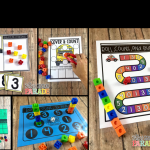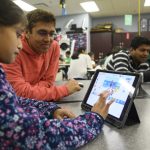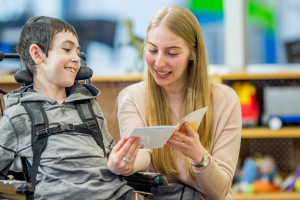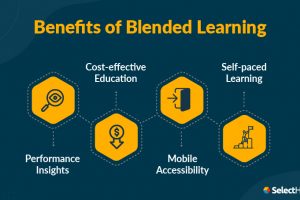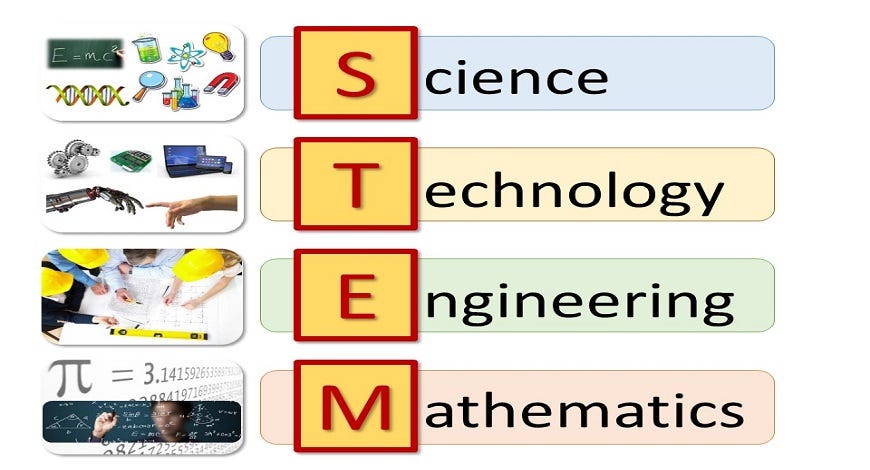
Science, technology, engineering and math (STEM) skills are essential for students to thrive in the 21st century. As Albert Einstein stated, “It is not so very important for a person to learn facts. For that he does not really need a college. He can learn them from books. The value of an education is a liberal arts college is not the learning of many facts but the training of the mind to think.” STEM education develops critical thinking, collaboration, problem solving and other abilities students need to shape the future.
Fueling Innovation
Technology accelerates progress solving problems when paired with human creativity and conscience. STEM educates the next generation of innovators who will advance solutions to global issues like climate change, disease and inequity.
STEM projects teach design thinking, a process of identifying real-world problems, brainstorming solutions, rapid prototyping, testing and refining ideas. When applying STEM skills this way, students gain confidence that their ideas can make an impact.
Neurodiverse teams that include divergent thinkers and different perspectives often generate the biggest breakthroughs. STEM courses should be welcoming environments stressing teamwork and out-of-the-box thinking.
Preparing Lifelong Learners
The pace of scientific discoveries and technological leaps is exponential. College graduates must be adept at continually learning new concepts to stay relevant. STEM develops flexible thinking and enthusiasm for growth throughout life.
With foundations in computer science, data analysis, research and systems thinking, today’s students can adapt as fields evolve. Learning to learn is essential as jobs transform alongside innovations.
STEM habits like questioning assumptions, examining evidence and navigating complex problems serve students in any career. These skills help navigate an unpredictable landscape.
Building STEM Literacy
Citizens confront public policy issues involving science, from health risks to new technologies. STEM literacy is crucial for civic participation and informed decisions impacting society.
Studying climate change models, statistics on disease transmission, cryptography for electronic security, and other examples builds context about STEM influencing society.
Media literacy lessons help students differentiate quality information from misinformation online surrounding STEM debates. Responsible development and use of innovations depends on an informed populace.
Sparking Interest Early
Attitudes about STEM take shape early. Girls and minorities often lose interest between elementary and middle school if not exposed to engaging STEM programs.
Provide diverse exemplars of scientists and engineers making a difference. Stress creative hands-on projects rather than rote memorization. Show STEM’s real-world applications.
Involve supportive mentors, after-school clubs, makerspaces and scouting activities to build confidence and identity as young scientists, mathematicians and technologists.
Access for Underserved Communities
Equal opportunity in STEM ensures all communities can participate in technological progress and prosperity. Yet lower-income schools often lack funding for quality STEM education.
Provide grants, scholarships, industry partnerships and teacher professional development to bring enriched STEM learning to disadvantaged schools. Help establish makerspaces with experiential tools.
Virtual lectures, apps and augmented reality activities are additional ways to expand STEM access. Technology should become an avenue of inclusion, not a wider divide.
Building Computational Thinking
Coding is the literacy of the future. Programming teaches logical thinking, pattern recognition and breaking complex tasks into step-by-step algorithms – computational thinking strategies that aid all learning.
Start block-based coding as early as kindergarten. Transition to text-based languages like Python and JavaScript. By middle school, teach skills like debugging, variables, loops and functions to tackle real-world programming challenges.
Equip students to become creators, not just consumers, of technology. Unlock creativity with coding across the curriculum.
Preparing a STEM Workforce
Strong STEM education correlates with a nation’s economic prosperity. Students proficient in STEM fill critical roles driving growth.
Provide career awareness of high-demand STEM jobs from healthcare to engineering to IT security. Guide internships and industry mentors to inspire passion for these fields. Support high schoolers earning STEM certifications.
Partner with local colleges and employers to align programs with workforce needs. This ecosystem strengthens communities and student futures.
STEM talents will steer the fate of nations. We must foster those talents responsibly and inclusively for a just, sustainable world.
So make STEM education a priority. The next scientific breakthrough, technological innovation and generation of visionaries awaits.



